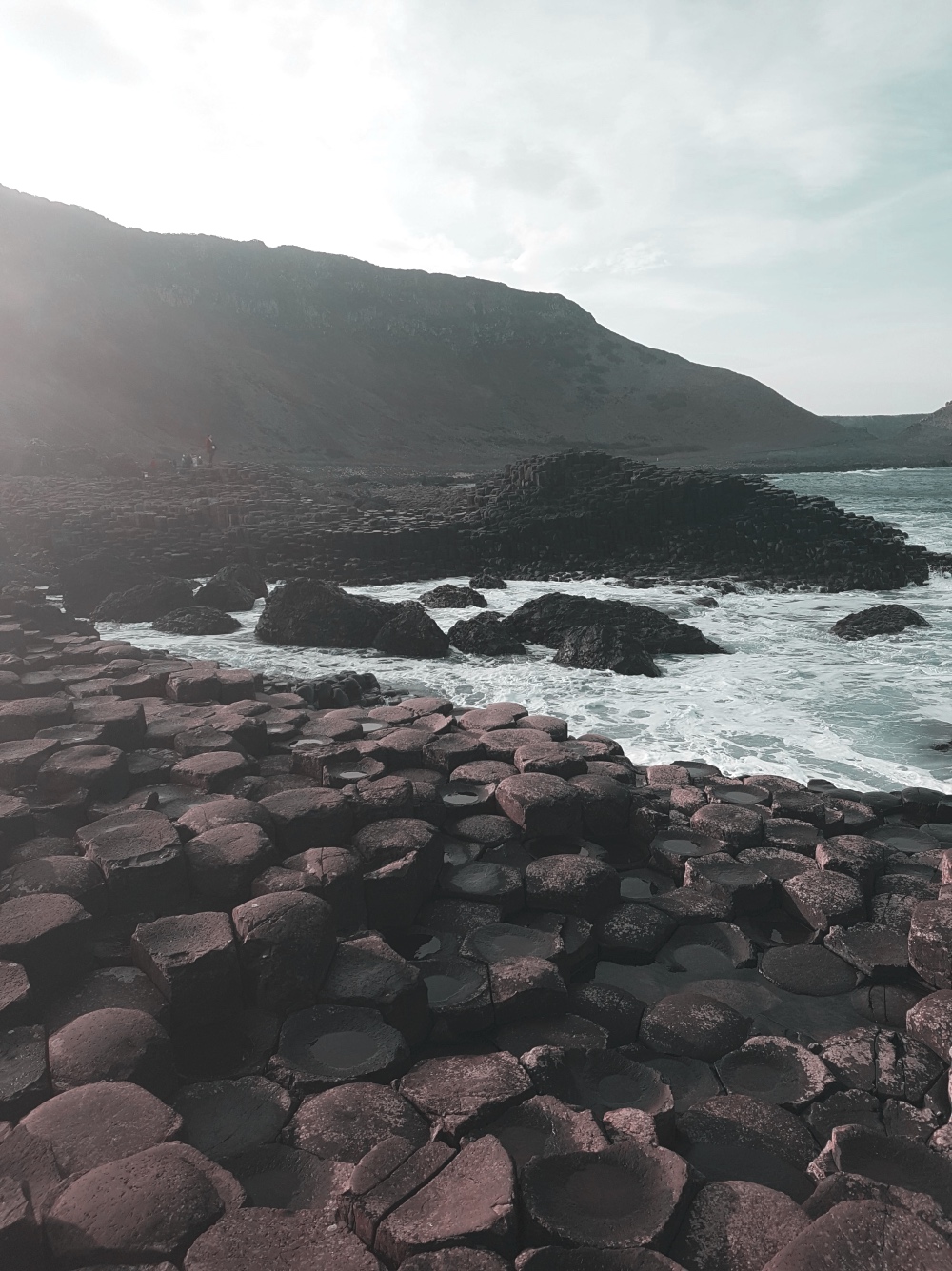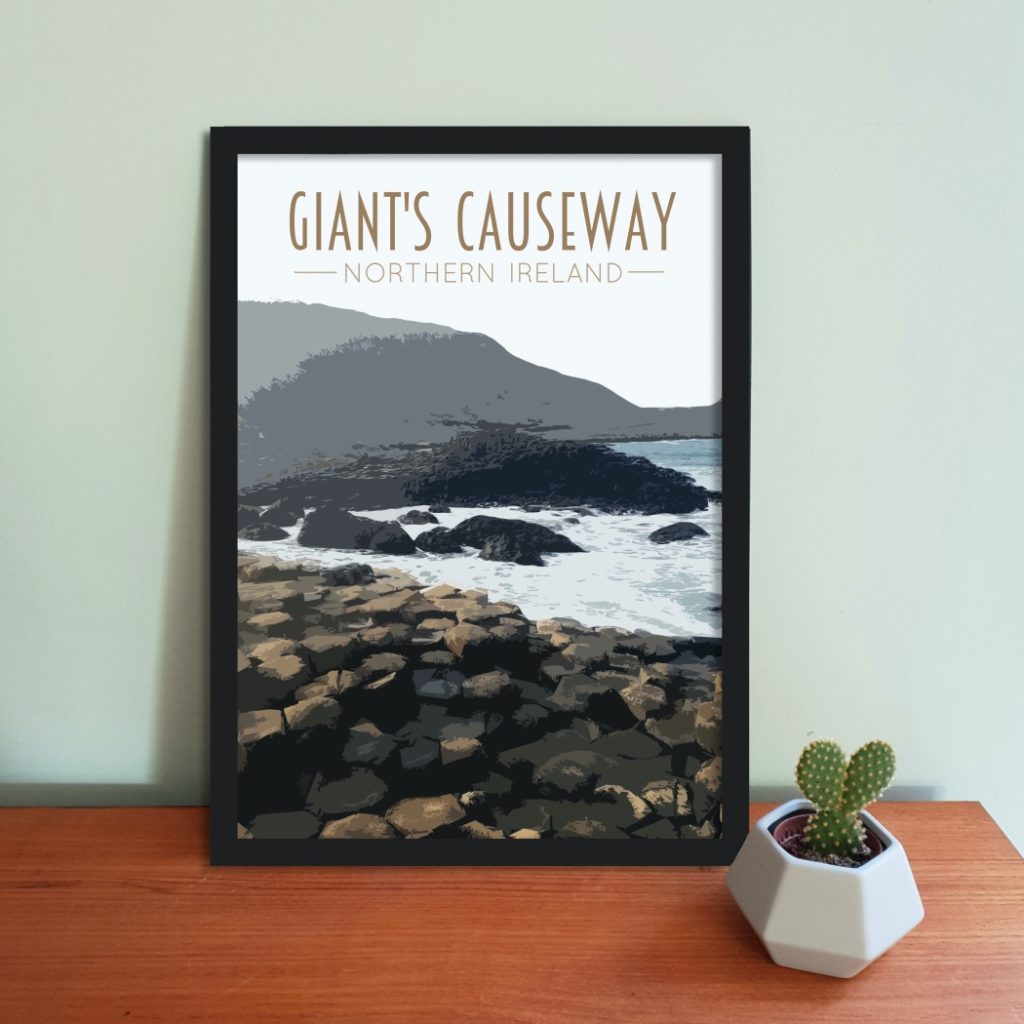Volcanic action or bickering giants?
The Giant’s Causeway in Northern Ireland is a UNESCO World Heritage Site comprised of 40,000 basalt columns. There are two sides to the story of how the Giant’s Causeway was formed – one based on science, the other is a little more mythical.
The causeway was formed around 50-60 million years ago. A giant named Finn McCool heard a Scottish giant across the sea was threatening Ireland. Erupting in anger, Finn threw rocks into the sea, creating a causeway allowing him to reach his foe.
In reality, intense volcanic activity spurted a lake of lava. The lava cooled rapidly, creating a hardened crust on the surface while molten lava remained inside.
Finn quickly cooled off when he saw the size of the Scottish Giant. He panicked and retreated back to Ireland. There, his wife helped to disguise him as a baby.
The lava can also look completely different as it cools, as it begins to contract. The creates the cracks that form the hexagonal columns. The variation in size of the stones is caused by variations in the rate the lava cools.
When the Scottish Giant arrived in Northern Ireland in search of Finn, he saw the size of Finn’s “baby” and thought, “If that’s the size of his baby – I’d hate to see the size of him!”. So he too got scared and ran back home. On his way he destroyed the causeway to prevent Finn coming after him (perhaps something Finn should have done in the first place?).
You can still see the remains of the Scottish side of this causeway on the isle of Staffa.
Visiting the Giant’s Causeway
The causeway is open to visitors year round. It is completely free to walk down to. Most people think you have to pay as it is managed by the National Trust but as long as you don’t park in their car park or enter via the visitor centre, you can explore freely.
If you do opt to go with the National Trust and pay to enter, you will receive an audio guide and a shuttle bus to and from the causeway.




1 thought on “How the Giant’s Causeway was formed”